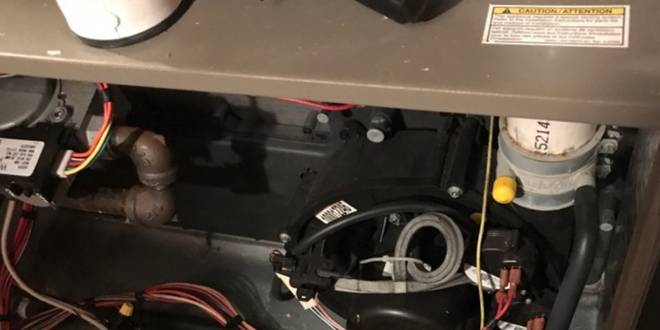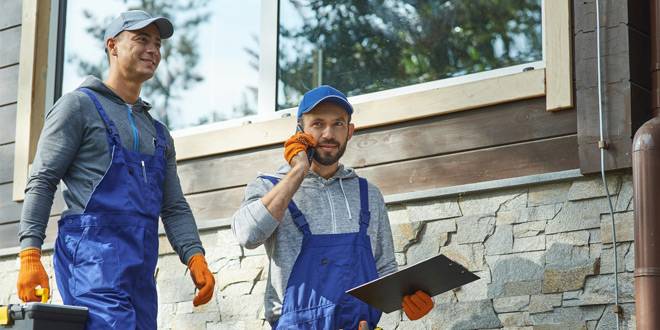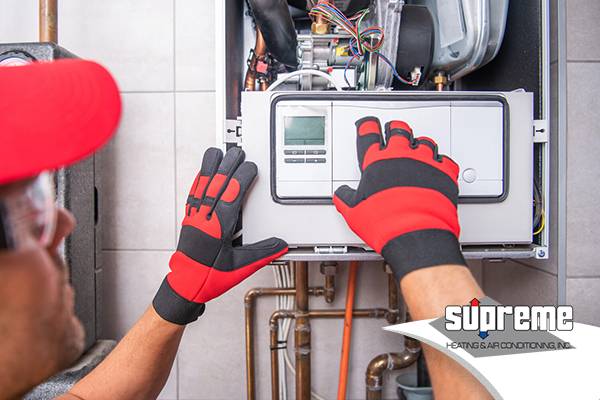
As the cold season approaches in New Jersey, ensuring your home remains warm and comfortable becomes a top priority. One common yet frustrating issue many homeowners face during these colder months is a furnace pilot light that won’t start. This small flame is crucial for the operation of your furnace, as it is necessary to ignite the gas and provide heat to your home. When it fails to light, it can leave you in an uncomfortable chill, searching for solutions.
Understanding Your Furnace’s Pilot Light 🕯️🔥🏠
The pilot light in your furnace plays a pivotal role in the comfort and warmth of your home. It is a small, continuously burning flame that ignites the gas burner, providing the necessary heat to warm your living space. But what happens when this tiny flame goes out or fails to start? Understanding the mechanics and importance of your furnace’s pilot light is the first step in troubleshooting issues that may arise, especially during the demanding winter months in New Jersey.
The Role of the Pilot Light
The pilot light’s primary function is to serve as an ignition source for the gas flowing through the furnace’s main burner. When the thermostat in your home signals the furnace to turn on, the gas valve opens, allowing gas to flow to the burner. The pilot light then ignites this gas, creating the heat that is circulated throughout your home. Without a functioning pilot light, the gas furnace cannot produce heat, leaving your home cold and uncomfortable.
Evolution of Furnace Technology
Over the years, furnace technology has evolved significantly. Older furnace models rely on a standing pilot light that burns continuously, ensuring that the furnace is always ready to start heating when needed. However, newer models often use electronic ignition systems, which eliminate the need for a constant flame, enhancing efficiency and safety. Despite these advancements, many homes still operate with gas furnaces that use a traditional pilot light, making knowledge of pilot light maintenance and troubleshooting essential for homeowners.
The Importance of Maintenance
Regular maintenance is crucial to ensure the longevity and proper function of your furnace’s pilot light. Over time, the pilot light assembly can become dirty or worn out, affecting its ability to ignite the gas burner efficiently. Annual inspections and cleanings by a qualified HVAC technician can prevent common pilot light problems, ensuring your furnace operates smoothly throughout the colder months.
Common Reasons Why Furnace Pilot Lights Won’t Start ❌🔥
When the furnace in your home fails to kick on and leaves you in the cold, the pilot light is often the first place to check. Several factors can prevent a pilot light from igniting, ranging from simple fixes to more complex mechanical issues. Understanding these common culprits can help you diagnose and, in some cases, rectify the problem on your own before reaching out for professional assistance.
1. Dirty Pilot Tube
The pilot tube is where the gas is released to fuel the pilot light. Over time, this tube can become clogged with dirt and debris, preventing gas from reaching the pilot light and, consequently, stopping it from igniting. A clear sign of a clogged pilot tube is a weak or non-existent pilot flame. Cleaning the pilot tube with a needle or a dedicated brush can often resolve this issue, restoring the flow of gas to the pilot light.
2. Faulty Thermocouple
The thermocouple is a safety device designed to detect whether the pilot light is lit. If the pilot light is out, the thermocouple shuts off the gas supply to prevent gas buildup. A faulty thermocouple may incorrectly sense that the pilot light is out, cutting off the gas supply even when everything is functioning correctly. Replacing a malfunctioning thermocouple is a task that typically requires the expertise of a professional HVAC technician.
3. Inadequate Gas Supply
Sometimes, the issue may not be with the furnace itself but with the gas supply. If the gas valve is closed or there is a problem with the gas line, the furnace won’t receive the fuel it needs to light the pilot. Checking to ensure the gas valve is open and that there are no interruptions in your gas service can help rule out this possibility.
4. Ignition Failure
For furnaces with electronic ignition systems, failure of the ignition component can prevent the furnace from starting. Issues can range from electrical problems to a failure of the ignition system itself. Troubleshooting electronic ignition systems often involves checking the electrical connections and ensuring the ignition system is receiving power.
5. High or Improper Airflow
Sometimes, the placement of the furnace or changes in the home’s ventilation can lead to excessive airflow around the furnace, which can blow out the pilot light or prevent it from lighting. Ensuring proper ventilation and checking for drafts that could affect the pilot light are crucial steps in troubleshooting this issue.
The Surprising Culprit: External Factors You Haven’t Considered 😲🌬️🔍
When troubleshooting a furnace pilot light that won’t start, it’s easy to overlook external factors that might not immediately come to mind. Beyond the usual suspects, like a dirty pilot tube or a faulty thermocouple, there are several less obvious conditions that can affect the operation of your furnace. Understanding these factors can provide insights into why your pilot light may be failing and how to address these challenges.
External Air Flow Disruptions
Your furnace’s location and the air flow around it play a significant role in the pilot light’s ability to stay lit. Drafts or gusts of air from open windows, doors, or even your home’s HVAC system can extinguish the pilot light. Additionally, improper ventilation in the furnace area can disrupt the pilot light’s stability. Evaluating the environment around your furnace for potential air flow disruptions and making adjustments can help prevent the pilot light from going out unexpectedly.
Humidity Levels
High humidity levels within your home can also impact the furnace’s pilot light. Moisture in the air can condense on the furnace components, including the pilot light assembly, leading to issues with ignition or keeping the pilot light burning. Managing indoor humidity levels with dehumidifiers or proper ventilation can mitigate these effects and promote more reliable furnace operation.
Pest Intrusions
Surprisingly, small animals or insects making their way into the furnace or the ventilation system can cause disruptions. These pests can block gas lines, air flow, or even damage wiring, leading to pilot light issues, among other furnace malfunctions. Regular inspections and ensuring that your furnace and its components are sealed and protected can prevent such intrusions.
Weather Impacts
In New Jersey, the weather can be extreme, with cold winters and hot summers. Severe weather conditions can affect the pressure in gas lines or cause damage to outdoor components that influence the furnace’s operation. Ensuring that your home is prepared to withstand these conditions, including protecting external components and inspecting your system after significant weather events, can help maintain the efficiency of your furnace.
Power Surges
For furnaces with electronic ignition systems, power surges can be a hidden culprit. Sudden spikes in electrical power can damage the furnace’s electronic components, preventing the ignition system from operating correctly. Surge protectors and regular electrical system maintenance can protect against this risk, ensuring your furnace remains operational.
Step-by-Step Guide to Troubleshooting Your Furnace Pilot Light 🛠️🚦🔥
Troubleshooting a furnace pilot light that won’t start can seem daunting. However, with a systematic approach, you can identify and possibly resolve the issue before needing to call in a professional. Here’s a step-by-step guide to help you safely assess and troubleshoot your furnace’s pilot light problems. Remember, safety is paramount; if at any point you feel unsure or uncomfortable, it’s best to contact a professional.
Step 1: Ensure Safety First
Before attempting any troubleshooting, ensure the furnace is turned off and the gas is shut off at the main valve. This precaution prevents any accidental gas leakage or harm while you’re inspecting the furnace.
Step 2: Inspect the Pilot Light
Check the Pilot Light Directly: Look for the pilot light. If it’s out, try relighting it according to the manufacturer’s instructions. Sometimes, relighting the pilot is all that’s needed.
Inspect for Dirt or Debris: If the pilot light won’t light or stay lit, check for visible signs of dirt or debris that could be blocking the gas flow.
Step 3: Clean the Pilot Tube
If you suspect a clogged pilot tube, carefully clean it with a needle or a small brush. Ensure all debris is removed, and try lighting the pilot light again.
Step 4: Check the Thermocouple
The thermocouple might be faulty or misaligned if the pilot light goes out shortly after being lit.
Test the Thermocouple: Gently clean the thermocouple with fine sandpaper to remove any corrosion. Make sure it’s properly positioned to sense the pilot flame.
Consider Replacement: If cleaning doesn’t help, the thermocouple may need to be replaced. This task may require a professional, as it involves handling gas line components.
Step 5: Evaluate the Gas Supply
Ensure the gas valve is fully open and check for any supply issues. If other gas appliances in your home are also affected, the problem might be with your gas supply. Contact your gas company for assistance.
Step 6: Assess External Factors
Check for Drafts: Ensure no drafts could be blowing out the pilot light. Make adjustments to the environment as necessary.
Control Humidity: If high humidity is a concern, use a dehumidifier and ensure good ventilation around the furnace.
Step 7: Seek Professional Help
If, after these steps, the pilot light still won’t start or you’re unsure about any part of the process, it’s time to call in the professionals. Persistent issues may indicate a more complex problem that requires expert diagnosis and repair.
How Supreme Heating and Air Conditioning Can Help 🏆🔥🌬️

For residents of Warren, Martinsville, Bridgewater, NJ, and surrounding areas, experiencing issues with a furnace pilot light that won’t start can be particularly distressing during the cold months. At Supreme Heating and Air Conditioning, we specialize in addressing and resolving such heating challenges, ensuring your home remains a warm and comfortable sanctuary throughout the winter. Our expertise and services are designed to provide residents in these areas with quick, efficient, and reliable solutions to their furnace problems.
Tailored Solutions for Warren, Martinsville, and Bridgewater Residents
- Local Expertise: Our team has extensive experience working within the unique climates of Warren, Martinsville, and Bridgewater, NJ. This local knowledge allows us to provide tailored solutions that address the specific challenges posed by New Jersey’s weather patterns.
- Prompt and Reliable Service: Understanding the urgency of heating issues, we offer prompt service to our clients in these communities. Our quick response times ensure that your heating system is back to optimal functioning with minimal disruption to your comfort.
- Comprehensive Maintenance Plans: To prevent future issues with your furnace pilot light and overall heating system, we offer comprehensive maintenance plans. Regular checkups can help identify potential problems before they escalate, ensuring your furnace remains in peak condition.
- Advanced Diagnostic Tools: We utilize the latest diagnostic tools and techniques to accurately identify the root cause of your furnace pilot light issues. This approach allows us to provide effective repairs that last, saving you time and money in the long run.
- Customer-Focused Approach: At Supreme Heating and Air Conditioning, customer satisfaction is our top priority. We take the time to listen to your concerns, providing personalized advice and solutions that meet your specific needs and budget.
Why Choose Us?
Residents of Warren, Martinsville, and Bridgewater, NJ, choose Supreme Heating and Air Conditioning for several reasons:
- Highly Trained Professionals: Our team consists of certified and experienced technicians who are equipped to handle a wide range of HVAC issues, including complex furnace pilot light problems.
- Quality Service: We are committed to providing high-quality service that adheres to industry standards. Our work is thorough, ensuring that your heating system functions efficiently and reliably.
- Customer Trust: We’ve built a reputation for honesty, reliability, and transparent pricing. Our customers trust us to provide solutions that are in their best interest without upselling unnecessary services.
- Local Availability: Being based in New Jersey, we are readily available to address your heating needs in Warren, Martinsville, and Bridgewater. Our local availability means we can offer faster service and support to our community members.
At Supreme Heating and Air Conditioning, we understand the challenges of maintaining a comfortable home environment in the varying climates of New Jersey. If you’re experiencing issues with your furnace pilot light not starting near Warren, Martinsville, or Bridgewater, NJ, don’t hesitate to contact us. Our team is ready to provide the expert service and support you need to ensure your home remains warm and welcoming, no matter the weather outside.
Stay Warm with Supreme Heating

Facing furnace issues in Warren, Martinsville, or Bridgewater, NJ? Let Supreme Heating and Air Conditioning restore your comfort efficiently. 🏠❄️ Our certified technicians are ready to tackle any heating challenge, ensuring your home stays cozy. Contact us today for prompt, professional service and experience the warmth of reliable heating solutions. 📞🔥 Your comfort is our mission.


